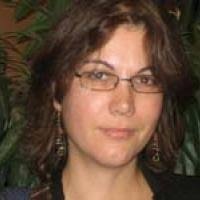Strengthening AGROVOC through engagement with expert communities: Multischeme multihierarchy and thesaurus management
06/12/2025
This Webinar was organized by the Food and Agriculture Organization of the United Nations (FAO).
BACKGROUND
This webinar will introduce how the AGROVOC team of FAO keeps AGROVOC up to date with a number of institutions and individual domain experts serving as focal points for specific languages and topics. With the aim to improve the quality of the services for the agricultural community, AGROVOC is now engaging with expert communities that are contributing and benefiting of the AGROVOC services.
AGROVOC is edited through the web-based platform VocBench 3, an advanced collaboration environment for maintaining thesauri, ontologies, code lists and authority resources, providing features such as history, validation, a publication workflow, and multi-user management with role-based access control. Specialized concept schemes are now possible within AGROVOC. VocBench 3 supports the use of hierarchical relation properties that are specific to a scheme. The multischeme hierarchy approach means that a controlled vocabulary can be viewed flexibly and edited with its customized relations, or exported with a generic SKOS hierarchy of broader and narrower relations, without changing the hierarchy of AGROVOC itself.
This opens for some very interesting potential collaborations with specialized communities: their vocabulary could be hosted by AGROVOC, and would enrich AGROVOC, while maintaining the possibility for separate hierarchy, exports and display.
About AGROVOC
AGROVOC is a multilingual thesaurus of over 36,500 concepts in all areas of interest to the Food and Agriculture Organization of the United Nations (FAO), from food, nutrition, and agriculture to fisheries, forestry, and the environment. AGROVOC is widely used in FAO services such as AGRIS and by third-party digital libraries and repositories for content organization, indexing and tagging, text mining, and translation.
Originally developed in the 1980s as a printed thesaurus, AGROVOC was moved in 2000 into an online database. In 2010, AGROVOC was converted into a concept scheme based on the W3C Semantic Web thesaurus standard, Simple Knowledge Organization System (SKOS). Since 2018, AGROVOC has been available for re-use under the Linked Open Data license, Creative Commons Attribution 3.0 IGO. As Dean Allemang writes:
Vocabularies like AGROVOC play a special role in the data ecosystem. They provide touch points where multiple data sets can refer to the same thing, and anyone who reuses those data sets know, without reading through documentation or contacting the data set authors, that they refer to the same thing. They are key shared resources that allow other resources to interoperate.
TARGET AUDIENCE
AGROVOC especially invites new and potential AGROVOC users and editors. However, other interested parties are welcome to join in as well.
THE FOLLOWING TOPICS WILL BE COVERED :
- What is AGROVOC?
- How to access AGROVOC?
- How to engage with AGROVOC?
- What are the benefits of contributing to and using AGROVOC?
- How do multischeme and multihierarchy work in AGROVOC?
- What are the current community of experts related to AGROVOC?

Imma Subirats
She is currently co-chairing the Interest Group on Agricultural Data at the Research Data Alliance.

